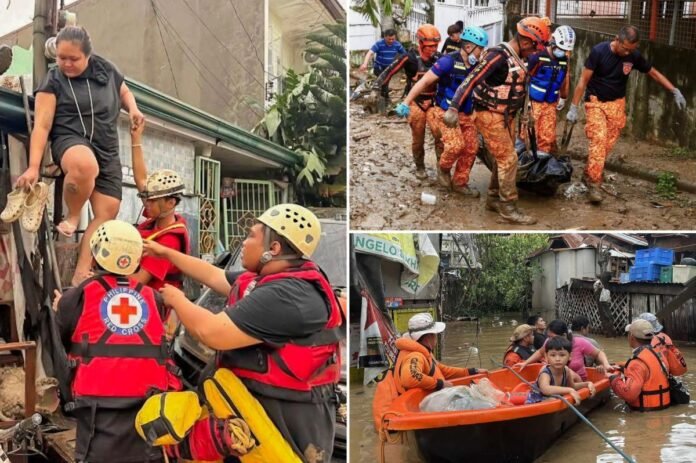Typhoon Kalmaegi made a deadly stop in the Philippines, sending at least 26 people to the grave—most of them lost to rising floodwater across central islands. The storm hit hard on Tuesday, leaving many residents clinging to roofs while cars floated in the swollen streets.
On top of the flooding disaster, a separate tragedy struck in southern Agusan del Sur. A Philippine Air Force Super Huey helicopter carrying humanitarian supplies crashed near Loreto, killing everyone on board. Military officials confirmed the bodies were recovered, but the exact cause remains unclear.
Kalmaegi’s path and weather conditions
Last seen over the coast of Jordan town, Guimaras, Kalmaegi pushed strong winds of 81 mph and gusts up to 112 mph across the country. Meteorologists expected the typhoon to veer east toward the South China Sea after tapping Palawan late Tuesday or early Wednesday.
Death toll and impact
Because Kalmaegi was the 20th tropical cyclone to hit the archipelago this year, the Philippine Civil Defense has been scrambling to confirm all casualties. In Cebu province, the most heavily hit area, bodies were found on rooftops and in flood‑swept streets. An elderly villager in Southern Leyte drowned amid a province‑wide power outage that followed the storm’s midnight landfall. In Bohol, a dead man was struck by a falling tree while the province’s residents huddled on makeshift shelters.
The Philippine Red Cross reported dozens more people trapped on rooftops in Liloan, Cebu. Rescue teams, overwhelmed by debris, fought to reach survivors as cars were partially submerged or floated in the flooded streets. “There are so many debris, you see cars floating. We have to wait for the flood to subside,” assistant charity head Gwendolyn Pang told the Associated Press.
A reminder of past storms
Cebu has been reeling from a 6.9‑meter earthquake on September 30, which killed 79 people and displaced thousands. That shock left many homes fragile when Kalmaegi’s winds hit. The West‑Southeast region has had its fair share of historic disasters – almost a decade ago, Typhoon Haiyan tore through Guiuan, killing more than 7,300 people and destroying about a million homes.
In Eastern Samar, the first province struck by the typhoon, wind damage knocked off roofs of around 300 rural shacks on Homonhon, a town part of Guiuan. Mayor Annaliza Gonzales Kwan confirmed no flooding but welcomed the win for the wind, saying local residents were prepared for the strike.
Travel and transport disruptions
The intense rains forced the Coast Guard to bar ferries and fishing boats from the volatile seas. Over 3,500 passengers and cargo truckers were left stranded at nearly 100 seaports, while 186 domestic flights were cancelled. Interisland ferries were grounded to protect crews from the rough seas.
Why the Philippines is always in the news for disasters
Around 20 typhoons and tropical storms hit the Philippines each year, and the country also sits on a fault line prone to earthquakes and on a volcanic belt. This combination makes it one of the world’s most disaster‑prone regions. As residents rebuild, relief agencies and the government continue to search for survivors and assess the full toll of Typhoon Kalmaegi.
Key takeaways for anyone following the storm: expect more rescue missions in Cebu and neighboring provinces; keep an eye on flight and ferry cancellations; and remember that Kalmaegi is part of a long line of powerful typhoons that have shaped the nation’s history of emergency response.
Source: New York Post
Stay informed on all the latest news, real-time breaking news updates, and follow all the important headlines in world News on Latest NewsX. Follow us on social media Facebook, Twitter(X), Gettr and subscribe our Youtube Channel.



